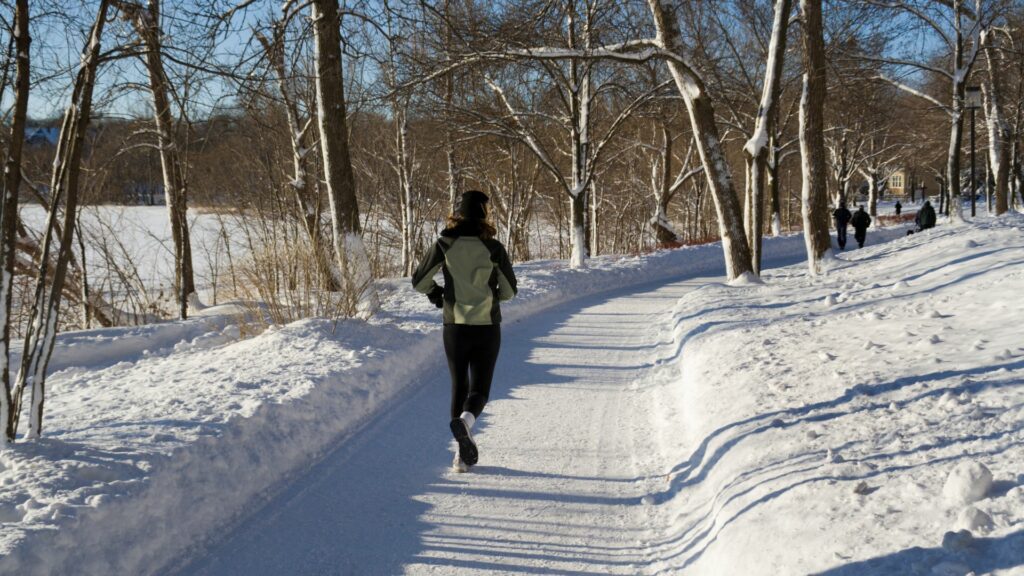Outdoor athletes inevitably contend with lower temperatures and more perilous environments during the autumn and winter months. How can runners or cyclists continue their sport in a safe and healthy way as days get shorter and colder?
Notwithstanding the utility of treadmills and exercise bikes, nothing is the same as a blast of fresh air. Many people also baulk at the idea of working out in the gym or their own living room, making the outdoors the obvious choice though certainly less appealing than in summer.
Sports physician Chris Goossens stresses that exercise outdoors still has great benefits in winter: "The health risks of both running and cycling in cold weather are very limited," he told De Morgen.
Breathing
"The human body is highly adaptable. The cold air you breathe during exercise travels a long way and usually heats up sufficiently before it reaches the alveoli in your lungs. If you want to minimise the impact of the cold, for example when it is freezing, you could cover your mouth with a scarf or if the effort is not too intensive, breathe through the nose. In extreme cold, just as at very high temperatures, it is advisable to exercise moderately."
"Another consideration is air quality. For example, it is best not to make too intensive efforts during high ozone concentrations or when there are many soot particles in the air because of wood burning. Anyone who suffers from exercise-induced asthma should be especially careful in winter, as the likelihood of an asthmatic reaction rises."
But the benefits are undeniable: "Spending time outside increases resistance and helps prevent illness," said Goossens. "Sitting indoors a lot, especially in poorly ventilated rooms, increases the risk of colds and other respiratory infections."
Warm up well
Another common concern of outdoor athletes during the winter months is injuries. It is often thought that low temperatures increase the risk of muscle damage and injuries through overuse. Goossens puts things into perspective: "It has still not been scientifically proven that exercising in the cold would lead to many more injuries. As long as you warm up well and gradually build up the effort, there is normally no problem."
"Everything depends on the warming up,” eleven-time Belgian champion in the 3,000-metre steeplechase and athletic trainer Paul Thys told De Morgen. “It is advisable to warm up longer when it is cold though we don't see more injuries in runners in the winter than in the summer. On the contrary, the temptation to shorten or skip the warm-up is greater when the weather is nice."
Go easy
Thys highlighted the danger of slippery roads: "The right shoes are very important, worn or flat soles significantly increase the risk of slipping."
In addition, it is wise to adjust your training to the weather conditions: don't sprint on an athletics track if it's icy and for cyclists, Goossens advises wearing a helmet. “In winter and autumn, there are always more injuries from falling because there is a chance to slip on sleet or fallen leaves."
Both runners and cyclists should pay extra attention to visibility in traffic as it gets dark earlier. "Wear a reflective vest or at least fluorescent strips," said Thys.

